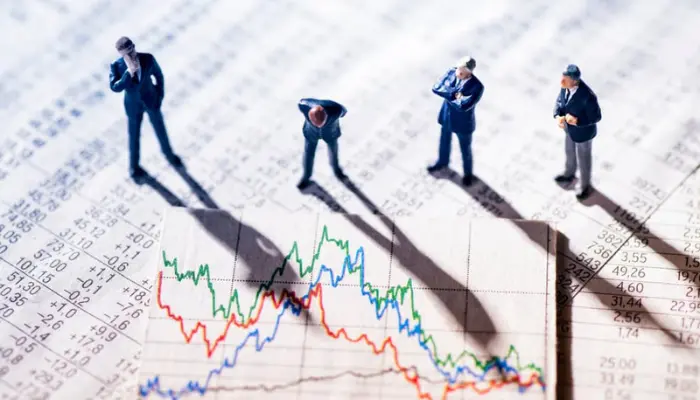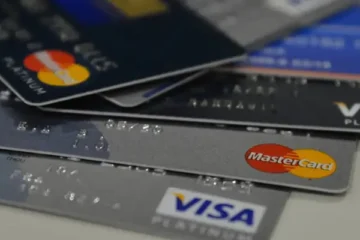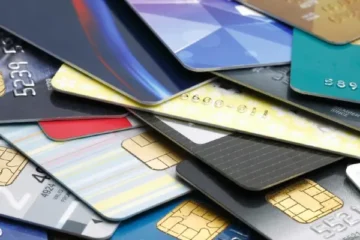How Systemic Risk Works and Why You Should Be Concerned
Have you ever stopped to think what happens when a big bank collapses? Like, one of the really big ones. The truth is, when a piece like that falls, the damage doesn’t stay there. Other institutions might fall too, and the entire financial system can go down with it. That’s what we call systemic risk.
Advertisement
If you’ve never heard of it, or just heard the term in passing, this article will break it all down — real talk, no fancy finance lingo. The goal is to help you understand how systemic risk can mess not just with big investors, but with your everyday life and money too.
Advertisement
Let’s get into it.
What is systemic risk?
Systemic risk is basically the danger of the entire financial system collapsing because of a problem in just one part of it. In other words, when one big institution fails and brings others down with it. It’s like a domino effect, but with your wallet.
Advertisement
Picture a bunch of banks, companies, and investment funds all tied together. If one crashes and owes money to another, which also owes someone else, things start falling apart quickly. And then? Credit dries up, interest rates go up, people lose jobs, and the economy takes a hit.
And it’s not just about banks. A major company or even a government can trigger systemic risk. The key idea is: when the system shakes, we all feel it.
How does systemic risk actually work?

To make it easier to understand, think of this: you’ve got a neighbor who’s deep in debt, but nobody knows it. He gets loans from a bank, buys a bunch of stuff on credit, makes risky investments, and looks like he’s doing great. But then one day, everything falls apart and he defaults.
Now, the bank that lent him the money is also in trouble. And that bank owes another bank. And that bank owes someone else. The trust disappears, no one wants to lend money anymore, and the whole system freezes.
In real life, this is pretty much what happened during the 2008 crisis. Banks were all connected through risky mortgage products. When people started defaulting, everything started to unravel.
Real-life examples of systemic risk
Systemic risk might sound like some complicated Wall Street talk, but the truth is — we’ve already seen it hit hard in the real world. And when it does, the damage goes way beyond banks and billionaires. It affects jobs, prices, savings, and the overall economy.
Here are some of the biggest financial shake-ups in recent history that show exactly how systemic risk works in action:
2008 Financial Crisis in the U.S.
It started with high-risk mortgages (the “subprime” stuff) sold as safe investments. When borrowers started missing payments, those assets tanked. Lehman Brothers went bankrupt, the markets crashed, and the government had to step in with billions to prevent a total collapse.
Long-Term Capital Management (1998)
A hedge fund run by Nobel Prize winners made huge leveraged bets. It backfired. The Fed had to call in major banks to prevent a financial meltdown.
Greece Debt Crisis
When Greece was on the edge of default, people feared it could bring down the entire eurozone. Why? Because European banks held a ton of Greek debt. If Greece defaulted, the dominoes would start falling.
What’s the difference between systemic risk and systematic risk?
Yeah, the names sound almost the same — and that confuses a lot of people. But they’re two very different things, and knowing the difference can help you make smarter financial decisions.
Systemic risk is when one part of the system causes the whole thing to collapse. Like one gear in a car breaking down and shutting off the entire engine.
Systematic risk is general market risk — things like inflation, wars, or pandemics. These affect all investments, no matter what. You can’t avoid it, but you can prepare for it.
How does systemic risk affect your life?
You might be thinking, “This is all just bank drama — what’s it got to do with me?” But the truth is, systemic risk can hit your wallet faster than you think. It doesn’t just shake Wall Street — it shakes your day-to-day life.
When the financial system gets unstable, it gets a lot harder for regular people to borrow money, keep their jobs, or even afford basic stuff. And the worst part? You don’t need to own stocks or work in finance to feel the impact.
- Banks stop lending money
- Credit card and loan interest rates shoot up
- Investments lose value
- Companies stop hiring and start laying people off
Even if you don’t invest in the stock market, your credit card, your job, and even the price of groceries can take a hit. This isn’t just about Wall Street — it’s about your street too.
What increases systemic risk?
Systemic risk doesn’t just pop up out of nowhere — it builds up over time. And when the warning signs are ignored, the system starts to crack. There are a few key things that make the whole financial system way more fragile.
These are the red flags experts are always watching — and honestly, you should be watching too:
- Too much debt
When banks or big companies borrow way more than they can handle, they’re walking on a tightrope. One slip, and it all comes crashing down. - Not enough liquidity
This is just a fancy way of saying there’s not enough cash flowing through the system. When money stops moving, businesses can’t pay bills, and banks stop lending. - Complex, high-risk financial products
Stuff like derivatives or bundled loans that no one really understands until it’s too late. These can blow up fast and drag others down with them. - Too many connections between institutions
When banks, funds, and insurers are all tied together, one failure spreads quickly. It’s like a spiderweb — break one string, and the whole thing shakes. - Political or economic chaos
Wars, corruption, policy changes, inflation — anything that makes investors nervous can raise the pressure on the system. - Weak or no regulation
If nobody’s watching the store, bad decisions pile up. And when things finally break, the damage is way worse than it had to be.
When too many of these are happening at once, we’re not just heading into trouble — we’re already in it.
How to protect yourself from systemic risk
Alright, let’s keep it real — you can’t stop a financial crisis from happening. You don’t run Wall Street, and you’re not the Federal Reserve. But what you can do is protect your own money so you don’t get caught off guard when things go sideways.
Systemic risk is out of your hands, but how prepared you are? That’s 100% up to you. Here are some simple, smart moves to keep your finances steady even when the economy isn’t.
1. Diversify your investments
Don’t put all your money in one place. Spread it across stocks, real estate, crypto, savings — mix it up.
2. Build an emergency fund
Save enough to cover 3 to 6 months of expenses. Keep it somewhere safe and easy to access.
3. Use assets outside the traditional banking system
Think about gold, trustworthy cryptocurrencies like Bitcoin, or physical real estate.
4. Check on the health of your banks
Stick with institutions insured by the FDIC and watch for signs of financial trouble.
5. Avoid unnecessary debt
Especially high-interest or variable-rate loans. Stay lean when times feel shaky.
6. Understand what the FDIC covers
In the U.S., the FDIC insures up to $250,000 per account. Knowing that can help you decide where to keep your money.
What does the government do to control systemic risk?
Let’s be honest — after getting burned by past financial disasters, the government had no choice but to step up. Regulators learned (the hard way) that leaving big banks and financial giants unchecked was a recipe for chaos.
So now, there’s a whole system in place to keep things from spiraling out of control again. From regular checkups on banks to tighter rules on risky investments, there are tools designed to spot problems before they blow up.
Here’s what’s being done behind the scenes to keep the financial system from falling apart — at least in theory.
- Banks go through stress tests to check if they can handle a crisis
- Capital requirements force banks to keep cash on hand
- The Federal Reserve monitors major financial risks
- Deposit insurance like the FDIC protects customer money
- Stricter oversight of hedge funds and investment firms
- More transparency and regulation of risky financial products
But even with all that, the system isn’t bulletproof. History proves that something unexpected can always happen.
Are there any investments immune to systemic risk?
Let’s clear something up — no investment is 100% safe. If anyone promises you that, walk away. But some assets handle financial chaos way better than others.
When the system starts shaking, certain types of investments tend to hold up or even gain value. These are the ones people usually run to when things get messy.
You don’t need to chase the “perfect” investment. The real game is building a well-balanced mix that can take a hit and still keep you standing.
- Physical gold: Doesn’t rely on banks or governments. It’s held value for centuries.
- Bitcoin: Decentralized and outside the traditional system, though still volatile.
- U.S. Treasury Bonds: The go-to for safety during uncertain times.
- Physical real estate: Especially in stable, high-demand areas.
The trick isn’t finding the perfect investment — it’s building a smart, balanced portfolio that can survive different scenarios.
Systemic risk might sound like something only rich people or Wall Street investors need to worry about. But the truth is, it affects all of us. When the financial system goes down, the effects show up in real life — higher prices, fewer jobs, harder access to credit.
The best way to handle this is to stay informed and prepared. If you diversify your assets, keep emergency cash on hand, and stay tuned in to what’s happening, you’re already ahead of the game. The world can be unpredictable, but that doesn’t mean you have to be unprepared.
Now that you understand what systemic risk is, take a hard look at your own finances. Is your money really safe? Don’t wait until the next crash to find out.





